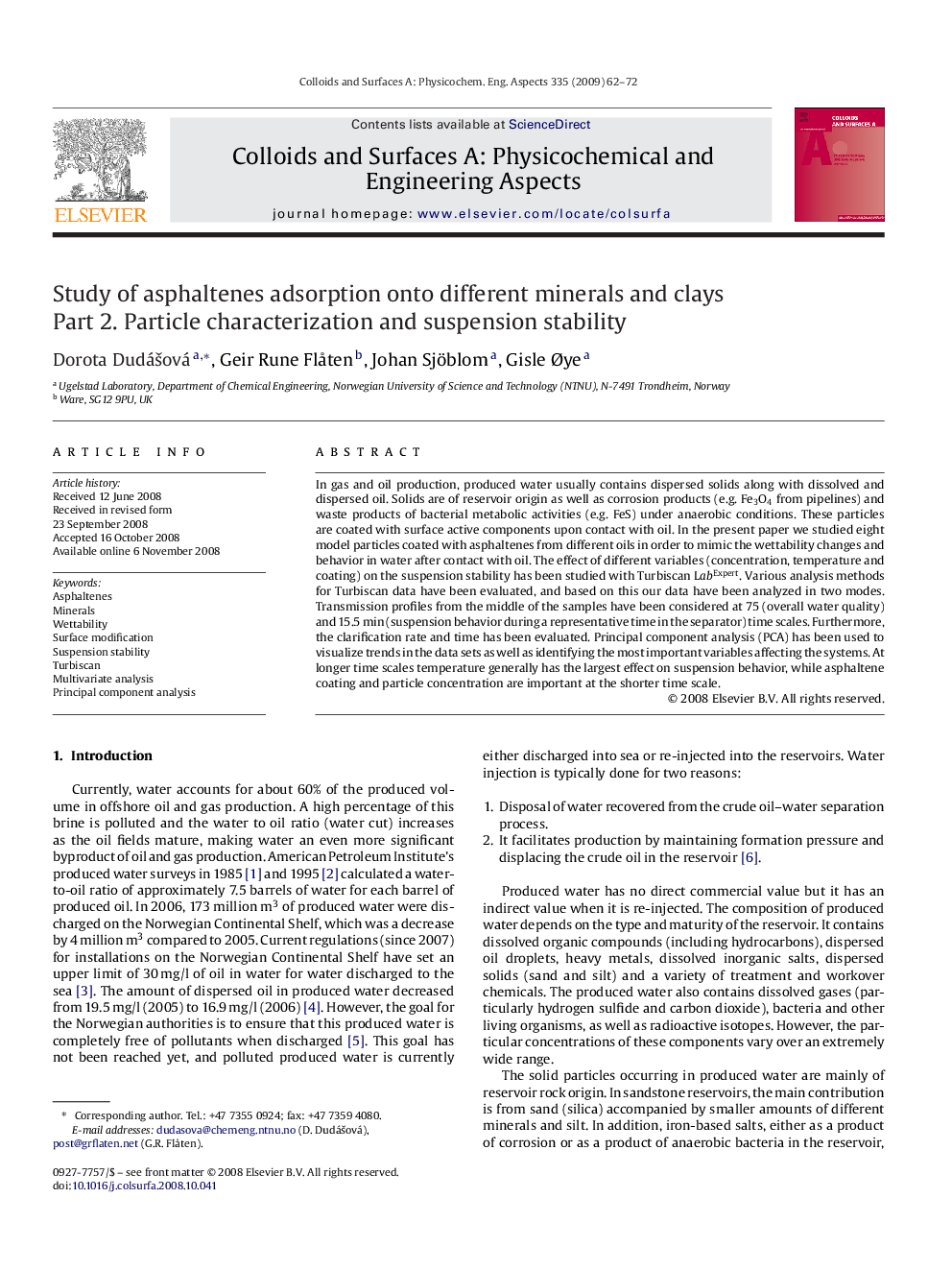| Article ID | Journal | Published Year | Pages | File Type |
|---|---|---|---|---|
| 596177 | Colloids and Surfaces A: Physicochemical and Engineering Aspects | 2009 | 11 Pages |
In gas and oil production, produced water usually contains dispersed solids along with dissolved and dispersed oil. Solids are of reservoir origin as well as corrosion products (e.g. Fe3O4 from pipelines) and waste products of bacterial metabolic activities (e.g. FeS) under anaerobic conditions. These particles are coated with surface active components upon contact with oil. In the present paper we studied eight model particles coated with asphaltenes from different oils in order to mimic the wettability changes and behavior in water after contact with oil. The effect of different variables (concentration, temperature and coating) on the suspension stability has been studied with Turbiscan LabExpert. Various analysis methods for Turbiscan data have been evaluated, and based on this our data have been analyzed in two modes. Transmission profiles from the middle of the samples have been considered at 75 (overall water quality) and 15.5 min (suspension behavior during a representative time in the separator) time scales. Furthermore, the clarification rate and time has been evaluated. Principal component analysis (PCA) has been used to visualize trends in the data sets as well as identifying the most important variables affecting the systems. At longer time scales temperature generally has the largest effect on suspension behavior, while asphaltene coating and particle concentration are important at the shorter time scale.
